English translation by Clayton Johnson
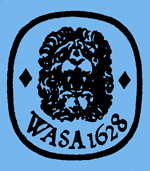
Once upon a time :
WASA

by Hervé Sasso

A monograph is being prepared at Vasamuseet.
It is about Wasa. It will be composed of 5 books, 300 to 500 pages in lenght.
The first volume is titled : "Vasa I : The Archaeology Of A Swedish Warship Of 1628".
This volume is mainly about the wreck and the salvage.
Carl Olof Cederlund, one of the salvors, is the principal author.
Fred Hocker, director of research at Vasamuseet, is series editor
The rest is being prepared will be edited as time passes by.
It is a great and beautiful work!

1 - The ship from port.
The spot marks the level of the stern.

2 - Upper gallery from starboard

3 - Port stern.
We can see the longboat close to the bow and the two guns on the floor

4 - Details of the inner structure.

5 - Details of the inner structure

6 - Here we are in the starboard gallery.
You can notice that the elements in the structure of the gallery have a very nice shape compared to the large timbers of the hold.

45 - Draw from Vasamuseet
Drawing courtesy of National Maritime Museums of Sweden

7 - Close-up of the starboard side.
Notice : the wales and planking are made with only moderate straightness,
while the scarf joints are made with a hight precisions.

8 - In the hold.
9 
10 
11 
12 
9 to 12 - This deck was deformed due to blasting rubble from the construction of nearby docks being dropped on the shipwreck.
13 
14 
13 to 14 - The head.

15 - Rake of the mainmast.

40 - Mainmast step.

39 - Documentation on the mast step from Vasamuseet.
Drawing courtesy of National Maritime Museums of Sweden

16 - The bilge.

17 - The whipstaff

18 - Reconstitution at scale 1/1. The original mask is in the archives
21 
22 
23 
24 
26 

26 and 28 - Technique of assembly used for Wasa

29 - These two railing elements are one meter apart in elevation.

30 - Notice the rake on the main mast.
31 
32 
31 to 32 - Another interesting point is the mainmast rake verses the maintop tilt.
This makes the maintop difficult to stand on.

33 - Vasamuseet plan

34 - Mainmast

35 - This drawing was made in 1987 and shows the locations of framing timbers over a length of the ship.
Drawing courtesy of National Maritime Museums of Sweden

36 - Looking carfully, you can see that the deck-beam over the bitts has sagged down.
43 
Drawing courtesy of National Maritime Museums of Sweden
44 
Drawing courtesy of National Maritime Museums of Sweden

37 - Check points and distortion of the hull: to see how the hull has moved over the years, 400 controlled points were placed to make 14 series of measurements possible.
Measurments are in 3D and are being used to make 2D distortion graphs

38 - Changes in shape of the stern between october 2000 to april 2005.
41 
42 
46 
47 
41 à 47 - Few exemples of archive data from Vasamuseet.
Drawing courtesy of National Maritime Museums of Sweden

48 - These two knees are separate and have been shaped from a natural tree fork. Because of the necessary dimensions, knees are composed of two parts attached to the keel.

49 - The blue flexible pipe is used to circulate conditionned air in the hold.

50 - Vasamuseet archive data concerning the maintop.
Drawing courtesy of National Maritime Museums of Sweden

55 - The gundeck (reconstruction at 1/1 scale)

56 - Life on board.

57 - Cannons (reconstruction).

58 - Cannons (reconstruction).

59 - Door of the admirals cabin.(Reconstruction).

60 - Underside view of some weather deck grating, from two decks below.

61 - In the hold.

62 - Section of the upper gun deck.

63 - In the captain’s cabin.

64 - Cross section of the ship from the Vasamuseet plans.
Drawing courtesy of National Maritime Museums of Sweden

65 - Stern (From the Vasamuseet plans)
Drawing courtesy of National Maritime Museums of Sweden

66 - Vasamuseet plan.
Drawing courtesy of National Maritime Museums of Sweden
67 

68 - Starboard gallery
Drawing courtesy of National Maritime Museums of Sweden
69 
70 
71 
72 
73 
70 to 73 - A quantity of cannon-balls in different shapes.
Men always have a good imagination to create these kinds of toys.


74 - The fabulous and long voyage of the Wasa.
75 
76 
77 
78 
75 to 78 - "The infernal puzzle"
79 
80 
81 
82 
83 
84 
85 
86 
87 
79 to 87 - Spots of the stern.
Pictures of reproduced carvings painted as they were in 1628.
All carvings were painted, and the ships upperworks were painted red, contradicting the idea that they were blue.

88 - Wasa family shield with wheatsheaf.

89 - The three crowns (Tre Kronor) emblem of the Swedish monarchy.
90  91
91
 92
92  93
93 
94  95
95 
90 to 95 – Different types of carving include Roman warriors, tritons, nereides and consols.

96 - The construction of a ship at the Royal dockyard:
we can easily see how the Dutch method of shipbuilding was conducted.
97 
98 
97 and 98 - Two drawings that define the shape of the Wasas hull.
104 
105 
106 
104 to 106 - Diorama of the Royal shipyard. Vasamuseet.
109 

107 - Level of the silt on the bottom of Strommen in which Wasa sat.
(indicated by a mark on the left)
108 
110  111
111 
112  113
113 
114  115
115 
108 to 115 - Manuscript data that came from the Vasamuseet archives.
Drawings that were made after raising the wreck.Drawing courtesy of National Maritime Museums of Sweden
116
117
118
119
120 
116 to 120 - Bow views :
The carvings are Roman emperors.
121 
122 
123 
127 
Drawing courtesy of National Maritime Museums of Sweden
128 
129 
130 
131 
132 
133 
127 to 133 - Détails of the shrouds

134 - Lion mask attached to the inside of the gunport lid to scare the ennemy when openning.
There were 56 but we have only 48 today.
135 
136 
138 
139  140
140 
Drawing courtesy of National Maritime Museums of Sweden
135 to 140 - Only 3 guns where found on the wreck since most of the guns were salvaged quickly after she sank.
For salvage, a diving-bell was used since the ship sunk in 32 meters of water.
A large part of the guns have been sold to Germany.
Plans of the carraige are from Vasamuseet data.

Drawing courtesy of National Maritime Museums of Sweden
488 
Drawing courtesy of National Maritime Museums of Sweden
490
491
492
493
494
495 
496 
497 
498
499
500 
503 
487 to 503 - Guns and carriages.

141 - The Vasamuseet shop sells an interesting 25 minute long DVD : The Warship Wasa.
142 
143 
Drawing courtesy of National Maritime Museums of Sweden
144 
145 
142 to 145 - A few inner details.
146 
147 
148 
149 
146 to 149 - Starboard side view.
You can see the lions heads on the port-lids.
The walkway on the last picture is used to go into the ship.
150 
151 
152 
153 
149 to 153 - Port different views.

154 - You can see an empty space let by an emporor carving that was never found.
155 
154 à 155 - Details of carving elements.
156 
Drawing courtesy of National Maritime Museums of Sweden
157 
156 to 157 - A drink to the health of Wasa.
158 
159 
160 
161 
162 
163 
164 
165 
166 
158 to 166 - Some pictures of the Wasa longboat. Parts of 6 ships boats were found around the wreck. This is the only one from Wasa that has been rebuilt. It is 12 meters long and can carry 12 people. This longboat had been finished and used before the maiden voyage of Wasa.
Thanks to Roberth for his help.

167 - General view of the 1/10 scale model of Wasa at Vasamuseet.

168 - A drawing of the stern of the Wasa at the same scale as a french 74 guns.

169 - If we line up the load waterlines, we can formulate questions!!
170 
170b 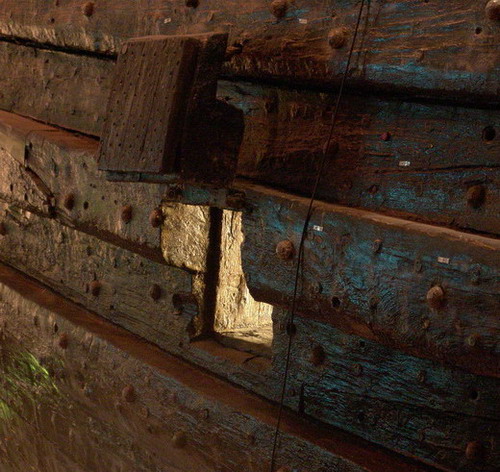
170/170b - A "message" gunport. Used for taking on and discharging mail from the ship.

171 - Captain’s table with dishes and eating utensils found on board. Notice the passglass from before in the middle of the table. Butter was a find on Wasa that was in good condition.

172 - Reconstruction of a sailor' face based on a skeleton and made with scientific police tools. Man is shown at his actual size on a stand in the museum.
173 
174 
175 

176 - Wasa model in the Berlin museum.
177 
178 
179 
180 
177 to 180 - Wasa model in the Berlin museum.
Scale model is 1/24.
The Wasa was buit by two Dutch brothers nammed Hendrick and Arendt Hybertsson. One died from an illness in 1627, before the maiden voyage of Wasa.
These two men were good workers and during the lawsuit of 1628, they were found to not be responsible for the sinking of the ship. It was the Kings claim that they built the ship to be unseaworthy.
181 
182 
183 
184 
185 
185 - A color symphony.
The magnificient views from each end of the ship and quarter galleries.
186 
188 
189 
190 
190 - A ¾ stern view.
191 
181 to 191 - Pictures from Berlin. Thanks to Markus Leber.
192 
193 
192 and 193 - Two pictures of Batavia + drawing to show similarities.
(Batavia 1628, 1300 T merchant ship, sank in 1629)
Details of the mutiny of Batavia :
http://www.mandragore2.net/dico/lexique2/lexique2.php?page=voyage-batavia
194 
195 
196 
197 
198 
195 to 198 - Victor Yancovtich’s Wasa pictures. This model was built from the Vasamuseet drawings and was made with Sergal kit carvings. You can notice that legends about Wasa have long lives.
Wasa was red and not blue as is built it kits 99% of the time. Thanks Victor

199 - Some views of the raising of the Wasa.
A picture showing the salvage fleet and the two pontoons of the Neptune company.
Oden and Frigg are positioned along the sides of Wasa which is still under water.
200 
201 
200 and 201 - Two pictures of the salvage operation in Vasamuseet.
On the second photo, you can see the tunnels made by the divers who have taken risks to their personal well being in particularly difficult conditions.
202 
203 
204 
205 
202 and 205 - The foor pictures are from the Vasamuseet archives that show the lifting system.
Drawing courtesy of National Maritime Museums of Sweden

206 - A diorama of the lifting device.

207 - Drawing explaining how the ship was raised in increments to shallower and shallower water in many lifts. The raising of the Wasa was not possible in only one lift.

208 - Archive data showing the differents locations of the ship during the salvage.
Drawing courtesy of National Maritime Museums of Sweden
209 
216 
209 to 216 - Demonstration of the water jet lance (Zetterstrom-Jet) for the digging of the sling tunnels under Wasa. The principle of operation: a powerful water jet is directed forward to dig into the mud while discharge is directed backwards by the peripheral crown.
The divers worked in complete darkness in very cold water that was 30 meters deep. They risked the ship falling on them as they burrowed forward in a narrow tunnel while not knowing of the solidity that the surrounding material had to hold the ship up.

219 - Carving of theWasa
223 
223 - René Vanhouche carving.. Thanks René

224 - Anchor
Drawing courtesy of National Maritime Museums of Sweden
225 
226 
225 and 226 - The Polish men
There are two fearful looking men crouching under small benches, one on the port side and the other on the starboard side at the bow. These two men are quite odd figures and are unlike any of the other sculptures on Wasa.
The men are Polish, which is clearly visible from their clothing and their facial features. These sculptures refer to a Polish punishment practised in Poland at the time that took bad behaving or criminal men and forced them to crawl under a bench and bark like a dog, confessing their bad deeds. The proximity of these men to the Roman warriors suggest that unworthy Polish lives should be spared after showing their cowardice. This is a very subtle way of humiliating Poland, the enemy. Also, when the crew used the beak-head as a toilet they had a clear view of the crounching Poles.

227 - Carvings of Roman Emperors stand in chronological order from the immediately aft of the figurehead to the stem.
The first under the crouching Polish figures is Tiberius.

228 - The great lordly warrior.

231 - Model at 1/1 scale of a Polish.

311- A wood cathedral.
314 
315 
316
317
314 to 317 - Port spot of castle details.
318 
319 
320
322
323
324
325
326
327
328
329
330
331
332
334
335
336
337
338
340
344
345
347
351
344 to 351 - Top of sterncastle.
412 
414
415
416
417
418
419
412 to 419 - Bow views.
420 
421 
422 
423
424
420 to 424 - Détails of port galleries.
425
426
427 
428
429
430
425 to 430 - Détails of starboard galleries.
432
433
434
436 
437433 to 437 - Gunports détails.
440441
442
443
444
445
446
447
448
449 
450 
451 
452 
453 
454
455
456
458
459
440 to 459 - Weather deck views.
461 
462 
463
464 
465
461 to 465 - Lion figurehead.
469
470
472 
469 to 472 - Maintop.
475 
476 
475 and 476 - Capstan.
481 
482 
483 
484 
482 to 484 - Anchors
505
506 
507 
508 
509
510
511
512
Some books on Wasa
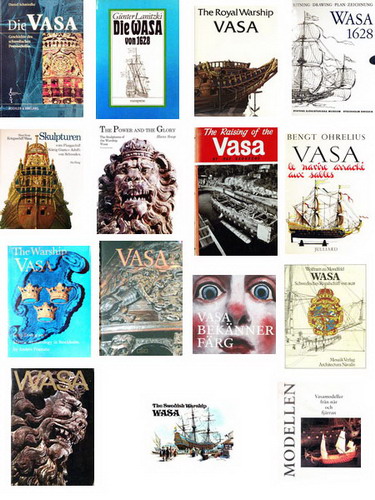
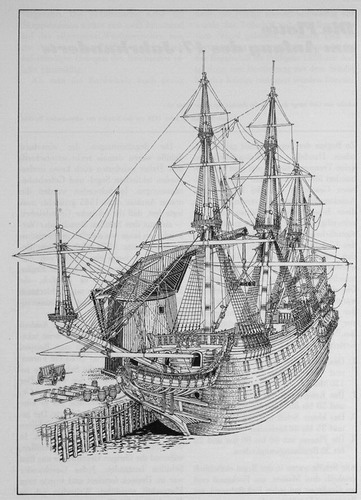
Wasa
Wasa in numbers.
Length over all : 69.0m – 226ft
Length of the hull : 61.0 m – 200 ft
Length between perpendiculars : 47.50 m – 156 ft
Length of the keel : 38.3 m – 37 ft
Beam at the main frame within planking : 11.10 m – 36 ft
Beam at the main frame ouside planking : 11.40m – 37.4 ft
Height from the keel to the main truck : 52.2 m – 171 ft
Draft at the after end of the keel : 4.80 m – 16 ft
Displacement : 1210 T
Ballast : 130 T
Sail area : 1275 m² - 13800 sq.ft
Number of sails : 10
Crew : 457 men
We can see that this ship was very large for this period.
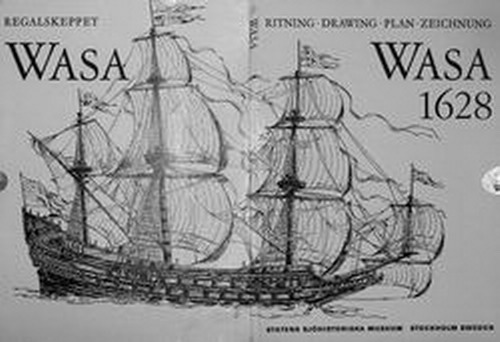
VASAMUSEET
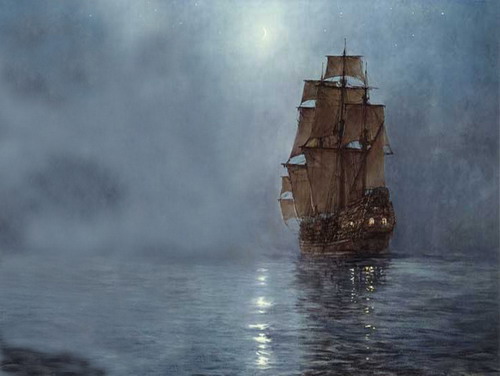
I invite you to view the website of my friend Clayton.
He tries what is rare: to carry out a model of Wasa that has a fully framed hull.The frames of this ship are not completely known and he is being advised by Fred Hocker, Director of Research at Vasamuseet.
It is a very interesting experiment.
Pages of his website on Wasa:
http://clayton707.googlepages.com/
Pages of his website on carving:
http://clayton707.googlepages.com/carvingpracticum
Johan Avard : Regalskeppet Vasa
http://hem.bredband.net/johava/WASA.htm
THE END
NEXT : RETURN TO WASA
Photographs and texts were extracted from a report carried out by Herve Sasso on the Wasa forum of Gerard Delacroix.
© Concieved and built by G. Delacroix 1999-2006
http://forum.aceboard.net/5500-323-31467-0-Wasa-news.htm

Thanks to Patrick Warnier Touscollectionneurs.com

